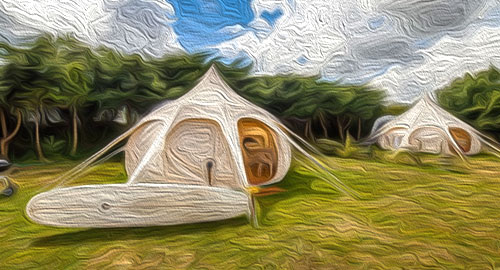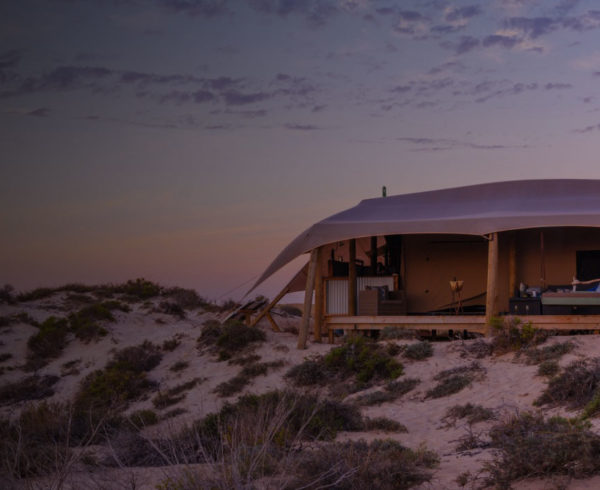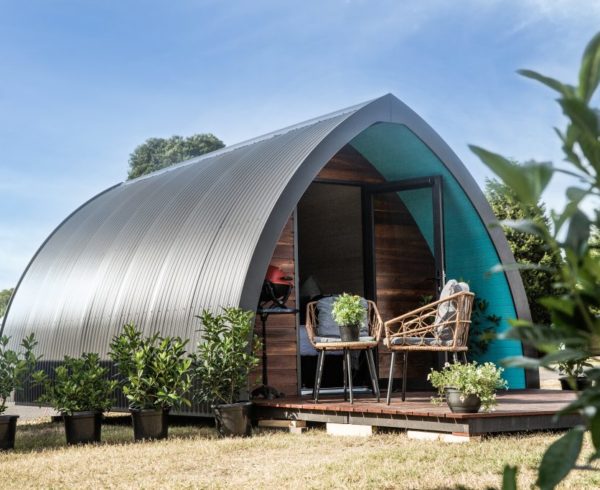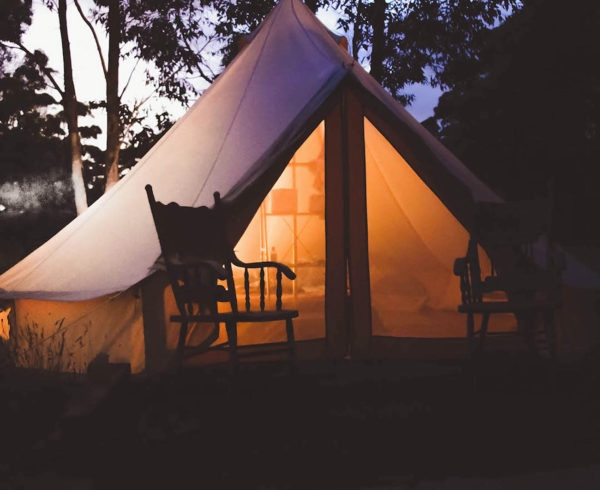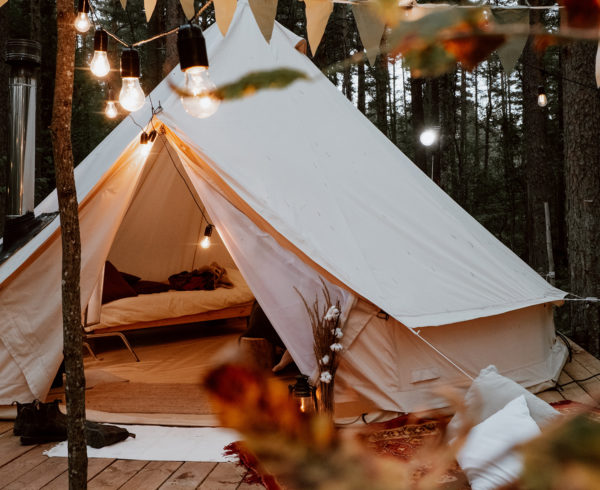List of the 11 Most Common Glamping Systems in Australia
Glamping in Australia has really taken off in the last few years. With Coronavirus here now it is only likely to get more popular. Why? Because overseas destinations just don’t look quite as appetising to the Australian traveller at the moment. Covid-19 has decimated international tourism and the Aussie tourist will probably be looking to take vacations in Australia for the foreseeable future. On our what is glamping page we do list the 8 most common glamping arrangements in Australia but in this article we will go much more into depth on the topic.
Some people love to rough it when they are on holidays but many more of us like a few of the creature comforts. Glamping gives you the best of both worlds. You feel like you are out in nature and roughing it a little but you will generally get the comforts of a hotel room. This is not always the case. Technically, you don’t need to have a shower or bath in your tent,cabin or pod to be glamping but this is becoming more of the norm. The writers and editors here at glamping.com.au all have camping and hardcore 4wding touring backgrounds but we have all embraced the benefits of glamping. So without further adieu we will get stuck into the glamping list.
1. What is a Yurt and How is it Used in Modern Glamping?
A yurt is a portable, round tent traditionally used by nomadic peoples in Central Asia, particularly Mongolia. The design of a yurt is both simple and ingenious, allowing for easy assembly and disassembly while providing a sturdy, weather-resistant shelter. Typically, a yurt consists of a wooden frame covered with felt or fabric. The circular structure is supported by a latticework of wooden poles, with a central ring at the top from which the roof poles radiate. This design creates a spacious, open interior that is both warm in winter and cool in summer.
Historical Significance
Historically, yurts were essential for nomadic lifestyles, offering a home that could be easily transported as herders moved with their livestock. The construction materials were often locally sourced, with the felt made from sheep’s wool and the wood frame crafted from available timber. The yurt’s design is highly efficient, providing insulation against the harsh climates of the steppes and mountains.
Modern Glamping Yurts
In recent years, yurts have been embraced by the glamping community as a unique and stylish accommodation option. Modern yurts retain the traditional circular shape and wood-frame structure but are often enhanced with contemporary mat erials and amenities to provide a luxurious camping experience.
erials and amenities to provide a luxurious camping experience.
Comfort and Luxury
Glamping yurts are typically outfitted with high-quality furnishings, including comfortable beds, stylish decor, and often en-suite bathrooms. Many are equipped with heating and cooling systems, ensuring a comfortable stay regardless of the season. The interiors can be designed to reflect various themes, from rustic and bohemian to sleek and modern, providing a unique and personalized experience for guests.
Versatility and Aesthetics
The aesthetic appeal of yurts lies in their harmonious blend of tradition and modernity. Their unique shape and design create a cozy yet spacious atmosphere, making them ideal for a range of uses—from romantic getaways and family vacations to yoga retreats and eco-friendly resorts. The large, open interiors can be adapted to various layouts, accommodating single travelers, couples, or even small groups.
Eco-Friendly Living
One of the key attractions of glamping yurts is their eco-friendly nature. Many glamping sites emphasize sustainability, and yurts fit perfectly into this ethos. Their construction minimizes environmental impact, and they can often be equipped with solar panels, composting toilets, and other green technologies. This makes yurts an excellent choice for eco-conscious travelers looking to enjoy nature responsibly.
In the world of modern glamping, yurts offer a perfect combination of comfort, style, and sustainability. They provide a unique accommodation experience that connects guests with nature while offering the luxuries of modern living. Whether nestled in the mountains, by the sea, or in a serene forest, yurts offer a memorable and enchanting retreat that is both timeless and contemporary.
2. What is a Cabin and How is it Used in Modern Glamping?
A cabin is a small, simple house typically constructed from wood and often situated in a rural or wilderness setting. Historically, cabins were built by pioneers and settlers as basic shelters in remote areas. These structures were valued for their durability and the ease with which they could be constructed using locally available materials. Traditional cabins are known for their rustic charm, featuring log walls, pitched roofs, and cozy interiors.
Historical Significance
Cabins have played a significant role in the history of settlement and exploration, particularly in North America. Pioneers built cabins as temporary homes while they cleared land and established farms. The simplicity of their design allowed for quick construction, which was essential in harsh and unpredictable environments. Over time, cabins have become synonymous with rugged, self-sufficient living and the spirit of adventure.
Modern Glamping Cabins
In the context of modern glamping, cabins have evolved into luxurious retreats that blend the charm of traditional design with contemporary amenities. Glamping cabins offer an upscale alternative to traditional camping, providing all the comforts of home in a serene natural setting.
Comfort and Luxury
Today’s glamping cabins are designed with comfort in mind. They often feature high-end furnishings, fully equipped kitchens, plush bedding, and modern bathrooms. Many cabins are outfitted with heating and air conditioning, making them suitable for year-round use. Large windows and open floor plans create a bright, airy feel, bringing the beauty of the outdoors inside.
Versatility and Aesthetics
Glamping cabins come in a variety of styles, from rustic log cabins to sleek, modern designs. This versatility makes them suitable for different tastes and purposes, whether it’s a romantic getaway, a family vacation, or a retreat with friends. Cabins can be found in diverse settings, from forested mountains and lakesides to coastal regions and desert landscapes. This wide range of locations allows travelers to choose the perfect backdrop for their glamping experience.
Eco-Friendly Living
Many glamping cabins are designed with sustainability in mind. Eco-friendly cabins often incorporate green building materials, energy-efficient appliances, and renewable energy sources such as solar panels. Some are built using reclaimed wood and other recycled materials, reducing their environmental footprint. Additionally, many glamping sites implement sustainable practices such as water conservation and waste management, making cabins an excellent choice for eco-conscious travelers.
In modern glamping, cabins offer a unique combination of rustic charm and contemporary luxury. They provide a cozy, comfortable retreat that allows guests to immerse themselves in nature without sacrificing the conveniences of modern life. Whether nestled in the woods, perched on a mountain, or overlooking a serene lake, cabins offer a versatile and appealing option for glamping enthusiasts. Their blend of tradition and innovation makes them a popular choice for those seeking a memorable and rejuvenating escape in the great outdoors.
3. What is a Cabin and How is it Used in Modern Glamping?
A cabin is a small, simple house typically constructed from wood and often situated in a rural or wilderness setting. Historically, cabins were built by pioneers and settlers as basic shelters in remote areas. These structures were valued for their durability and the ease with which they could be constructed using locally available materials. Traditional cabins are known for their rustic charm, featuring log walls, pitched roofs, and cozy interiors.
Historical Significance
Cabins have played a significant role in the history of settlement and exploration, particularly in North America. Pioneers built cabins as temporary homes while they cleared land and established farms. The simplicity of their design allowed for quick construction, which was essential in harsh and unpredictable environments. Over time, cabins have become synonymous with rugged, self-sufficient living and the spirit of adventure.
Modern Glamping Cabins
In the context of modern glamping, cabins have evolved into luxurious retreats that blend the charm of traditional design with contemporary amenities. Glamping cabins offer an upscale alternative to traditional camping, providing all the comforts of home in a serene natural setting.
Comfort and Luxury
Today’s glamping cabins are designed with comfort in mind. They often feature high-end furnishings, fully equipped kitchens, plush bedding, and modern bathrooms. Many cabins are outfitted with heating and air conditioning, making them suitable for year-round use. Large windows and open floor plans create a bright, airy feel, bringing the beauty of the outdoors inside.
Versatility and Aesthetics
Glamping cabins come in a variety of styles, from rustic log cabins to sleek, modern designs. This versatility makes them suitable for different tastes and purposes, whether it’s a romantic getaway, a family vacation, or a retreat with friends. Cabins can be found in distinct settings, from forested mountains and lakesides to coastal regions and desert landscapes. This wide range of locations allows travelers to choose the perfect backdrop for their glamping experience.
Eco-Friendly Living
Many glamping cabins are designed with sustainability in mind. Eco-friendly cabins often incorporate green building materials, energy-efficient appliances, and renewable energy sources such as solar panels. Some are built using reclaimed wood and other recycled materials, reducing their environmental footprint. Additionally, many glamping sites implement sustainable practices such as water conservation and waste management, making cabins an excellent choice for eco-conscious travelers.
In modern glamping, cabins offer a unique combination of rustic charm and contemporary luxury. They provide a cozy, comfortable retreat that allows guests to immerse themselves in nature without sacrificing the conveniences of modern life. Whether nestled in the woods, perched on a mountain, or overlooking a serene lake, cabins offer a versatile and appealing option for glamping enthusiasts. Their blend of tradition and innovation makes them a popular choice for those seeking a memorable and rejuvenating escape in the great outdoors.
4. What is a Tipi and How is it Used in Modern Glamping?
A tipi, also spelled teepee, is a conical tent traditionally used by Indigenous peoples of the Great Plains in North America. The design of a tipi is both practical and efficient, making it well-suited for nomadic lifestyles. Typically, a tipi consists of a wooden frame of poles arranged in a cone shape, covered with animal skins or canvas. This structure provides a spacious and sturdy shelter that can be easily assembled, disassembled, and transported.
Historical Significance
Historically, tipis were essential to the nomadic tribes of the Great Plains, such as the Lakota, Cheyenne, and Comanche. These portable homes were designed to withstand harsh weather conditions, including strong winds and heavy snowfall. The materials used—primarily wooden poles and buffalo hides—were locally sourced and sustainable. The conical shape of the tipi allowed for efficient heating and ventilation, with a central fire pit providing warmth and a smoke hole at the top allowing smoke to escape.
Modern Glamping Tipis
In the world of modern glamping, tipis have been reimagined to offer a blend of traditional design and contemporary comfort. Glamping tipis provide a unique and immersive experience, allowing guests to connect with nature while enjoying luxurious amenities.
Comfort and Luxury
Today’s glamping tipis are equipped with a range of modern comforts. They often feature high-quality furnishings, including comfortable beds, cozy linens, and stylish decor. Many tipis are also outfitted with heating and cooling systems to ensure a comfortable stay in any season. The interiors can be customized to reflect various themes, from rustic chic to bohemian elegance, providing a unique and memorable experience for guests.
Versatility and Aesthetics
Glamping tipis offer a versatile and visually striking accommodation option. Their distinctive conical shape and cultural heritage make them an appealing choice for glampers seeking a unique and authentic experience. Tipis can be found in a variety of settings, including forests, deserts, and mountains, each offering a different ambiance. This versatility allows travelers to choose the perfect environment for their glamping adventure, whether it’s a secluded woodland retreat or a picturesque desert escape.
Eco-Friendly Living
Tipis are inherently eco-friendly due to their traditional design and materials. Modern glamping tipis often continue this legacy by incorporating sustainable practices and materials. Many glamping sites use eco-friendly products, such as organic linens and biodegradable toiletries, and some tipis are equipped with solar panels or other renewable energy sources. This commitment to sustainability makes tipis an excellent choice for eco-conscious travelers who want to minimize their environmental impact while enjoying a luxurious outdoor experience.
In the realm of modern glamping, tipis offer a unique blend of historical tradition and contemporary luxury. They provide a spacious, comfortable, and visually appealing retreat that allows guests to immerse themselves in nature without sacrificing the conveniences of modern life. Whether nestled in a forest, perched on a mountaintop, or set in a serene desert landscape, tipis offer a versatile and enchanting option for glamping enthusiasts. Their combination of cultural heritage, eco-friendly design, and modern amenities makes them a popular choice for those seeking a memorable and immersive outdoor escape.
5. What is a Tent Cabin and How is it Used in Modern Glamping?
A tent cabin is a hybrid accommodation that combines the sturdy structure of a cabin with the immersive experience of a tent. Typically, a tent cabin features a solid, often wooden, frame with canvas or fabric walls and roof. This design offers the protection and stability of a cabin while allowing guests to feel closer to nature, much like traditional camping. Tent cabins are a popular choice in the glamping world, providing a unique blend of comfort, durability, and outdoor experience.
Historical Significance
Tent cabins have roots in both traditional tent designs and the need for more durable, semi-permanent shelters in remote or rugged areas. They were often used by early explorers, miners, and workers in remote locations, offering a more substantial shelter than a tent but still portable enough to be moved as needed. Over time, the concept has evolved, and tent cabins have become a staple in outdoor recreation areas, providing a comfortable and convenient lodging option for campers.
Modern Glamping Tent Cabins
In modern glamping, tent cabins have been transformed into luxurious retreats that offer the best of both worlds: the natural ambiance of camping and the amenities of a cabin. These structures cater to a wide range of preferences, from rustic simplicity to high-end luxury.
Comfort and Luxury
Today’s glamping tent cabins are designed with comfort in mind. They often feature high-quality furnishings, including plush beds, cozy linens, and stylish decor. Many tent cabins come equipped with heating and cooling systems, ensuring a comfortable stay in any season. The interiors can be quite spacious, with separate sleeping and living areas, and sometimes even kitchenettes and bathrooms, providing a home-like feel in the heart of nature.
Versatility and Aesthetics
Tent cabins are versatile and can be adapted to various styles and settings, making them suitable for different types of glamping experiences. They can be found in a range of environments, from forested mountain regions to coastal areas and deserts. This adaptability allows for customization in terms of decor and amenities, catering to different tastes and preferences. Whether you prefer a rustic, back-to-basics experience or a more luxurious stay with all the modern conveniences, there’s a tent cabin to suit your needs.
Eco-Friendly Living
Many glamping tent cabins are designed with sustainability in mind. The use of canvas and wood, both renewable resources, aligns with eco-friendly principles. Additionally, many glamping sites emphasize sustainable practices, such as using solar power, composting toilets, and rainwater collection systems. This makes tent cabins an attractive option for eco-conscious travelers who want to enjoy nature responsibly while minimizing their environmental footprint.
In modern glamping, tent cabins offer a perfect blend of rustic charm and contemporary luxury. They provide a comfortable, sturdy, and immersive way to experience the outdoors without sacrificing the conveniences of modern living. Whether nestled in a dense forest, perched on a mountainside, or set near a tranquil lake, tent cabins offer a versatile and appealing option for glamping enthusiasts. Their combination of traditional design, eco-friendly materials, and modern amenities makes them a popular choice for those seeking a memorable and comfortable outdoor adventure.
Longitude 131 which uses tent cabins is possibly the most opulent glamping experience in Australia and possibly the world. With views that stretch over to Uluru and Kata Tjuta (the Olgas) this is truly a unique glamping experience. With prices stretching up to $6400 per person per night it could also be the world’s most expensive glamping experience.
6. What is a Bell Tent and How is it Used in Modern Glamping?
A bell tent is a type of tent characterized by its round, bell-like shape and a central supporting pole. These tents are typically made from durable canvas and feature a high ceiling, providing a spacious and airy interior. The walls of a bell tent are sloped, which gives it a distinctive, elegant silhouette. Historically used by nomadic peoples and military forces, bell tents have gained popularity in the modern glamping scene for their unique blend of tradition and luxury.
Historical Significance
Bell tents have a rich history dating back to the 19th century when they were used by the British army for their practical design and ease of setup. The central pole and round shape allowed for efficient use of space and good ventilation, making them ideal for various climates and conditions. Over time, their use spread to civilian life, particularly for camping and outdoor events, due to their robustness and aesthetic appeal.
Modern Glamping Bell Tents
In the context of modern glamping, bell tents have been transformed into luxurious accommodations that combine the charm of traditional camping with the comforts of a hotel. These tents offer an upscale camping experience, allowing guests to enjoy nature without compromising on comfort and style.
Comfort and Luxury
Today’s glamping bell tents are designed to provide maximum comfort. They often feature high-quality furnishings, including comfortable beds, plush linens, and stylish decor. Many bell tents are equipped with heating and cooling systems to ensure a comfortable stay regardless of the season. The spacious interiors can accommodate various layouts, from romantic setups for couples to family-friendly configurations. Some even include additional amenities like electricity, Wi-Fi, and en-suite bathrooms, elevating the camping experience to a new level of luxury.
Versatility and Aesthetics
Bell tents are highly versatile and can be adapted to a wide range of settings and styles. They are popular in mixed ecosystems, including forests, beaches, mountains, and open fields. The elegant design and spacious interior make them suitable for various themes, from rustic and bohemian to chic and modern. This versatility allows glamping sites to customize the tents to suit different preferences and occasions, such as weddings, festivals, and retreats.
Eco-Friendly Living
One of the key attractions of glamping bell tents is their eco-friendly nature. Made from natural materials like cotton canvas, bell tents are breathable, durable, and biodegradable. Many glamping sites emphasize sustainability, incorporating eco-friendly practices such as solar power, composting toilets, and rainwater harvesting. This makes bell tents an excellent choice for travelers who want to minimize their environmental impact while enjoying a luxurious outdoor experience.
In the world of modern glamping, bell tents offer a perfect blend of traditional charm and contemporary luxury. They provide a spacious, comfortable, and visually appealing retreat that allows guests to immerse themselves in nature without sacrificing the conveniences of modern life. Whether set in a dense forest, perched on a mountain slope, or situated by a serene lakeside, bell tents offer a versatile and enchanting option for glamping enthusiasts. Their combination of historical significance, eco-friendly design, and modern amenities makes them a popular choice for those seeking a memorable and luxurious outdoor adventure.
7. What is a Glamping Pod and How is it Used in Modern Glamping?
A glamping pod is a small, self-contained unit designed to provide a comfortable and luxurious camping experience. Typically constructed from wood or other durable materials, glamping pods are fully enclosed structures that offer more protection and privacy than traditional tents. These pods are popular in the glamping world due to their modern design, comfort, and ability to blend seamlessly into natural surroundings.
Historical Significance
Glamping pods are a relatively recent innovation in the world of outdoor accommodations. They evolved from the desire to combine the rustic charm of camping with the amenities of a hotel room. Unlike traditional camping, which often involves setting up a tent and forgoing many comforts of home, glamping pods offer a ready-made, comfortable shelter that can be enjoyed year-round. Their development reflects a growing trend towards sustainable, eco-friendly travel and the increasing popularity of glamping as a luxurious alternative to traditional camping.
Modern Glamping Pods
In modern glamping, pods have become a sought-after option for travelers seeking a unique blend of nature and comfort. These pods come in various shapes and sizes, from simple, cozy units to more elaborate designs with multiple rooms and high-end amenities.
Comfort and Luxury
Today’s glamping pods are designed to maximize comfort and convenience. They are often equipped with high-quality furnishings, including comfortable beds, seating areas, and sometimes even small kitchens and bathrooms. Many pods feature heating and air conditioning, ensuring a comfortable stay in any weather. The interiors are thoughtfully designed to provide a cozy and inviting atmosphere, with decor that ranges from rustic chic to sleek and modern.
Versatility and Aesthetics
Glamping pods are incredibly versatile and can be adapted to various settings and themes. They are commonly found in diverse environments such as forests, mountains, coastal areas, and open fields. The compact and modular design of pods makes them suitable for a wide range of uses, from romantic getaways and family vacations to solo retreats and group events. Their aesthetic appeal lies in their modern, streamlined look, which can be customized to blend with the surrounding landscape or stand out as a unique architectural feature.
Eco-Friendly Living
Many glamping pods are designed with sustainability in mind. The use of natural materials like wood, coupled with energy-efficient features such as insulation, solar panels, and low-energy lighting, helps minimize their environmental impact. Additionally, many glamping sites implement eco-friendly practices such as water conservation, waste management, and the use of eco-friendly products. This commitment to sustainability makes glamping pods an excellent choice for travelers who want to enjoy nature responsibly while minimizing their carbon footprint.
In the realm of modern glamping, pods offer a perfect fusion of contemporary design and luxurious comfort. They provide a private, cozy, and secure retreat that allows guests to immerse themselves in nature without sacrificing the conveniences of modern life. Whether nestled in a forest, perched on a hillside, or situated by a tranquil lake, glamping pods offer a versatile and appealing option for glamping enthusiasts. Their combination of stylish design, eco-friendly features, and modern amenities makes them a popular choice for those seeking a memorable and sustainable outdoor adventure.
8. What is an Eco Pod and How is it Used in Modern Glamping?
An eco pod is a small, self-contained, eco-friendly accommodation designed to provide a sustainable and luxurious camping experience. Typically constructed from environmentally friendly materials, eco pods are fully enclosed structures that emphasize minimal environmental impact. These pods are becoming increasingly popular in the glamping world due to their modern design, comfort, and commitment to sustainability.
Historical Significance
Eco pods represent a modern evolution in outdoor accommodations, reflecting a growing awareness and commitment to environmental sustainability. While traditional camping often involves minimal structures and leaving a light footprint, eco pods take this concept further by integrating advanced sustainable technologies and materials. Their development aligns with the broader trends of eco-tourism and the desire for comfortable, luxurious experiences that do not compromise environmental principles.
Modern Glamping Eco Pods
In modern glamping, eco pods have emerged as a top choice for travelers seeking a unique blend of nature, luxury, and sustainability. These pods are designed to minimize environmental impact while maximizing comfort and convenience, making them ideal for eco-conscious travelers.
Comfort and Luxury
Today’s glamping eco pods are designed with both sustainability and comfort in mind. They often feature high-quality furnishings, including comfortable beds, seating areas, and sometimes even small kitchens and bathrooms. Many eco pods are equipped with modern amenities such as heating, cooling, and Wi-Fi, ensuring a comfortable stay in any season. The interiors are thoughtfully designed to provide a cozy and inviting atmosphere, often incorporating natural and recycled materials to enhance their eco-friendly appeal.
Versatility and Aesthetics
Eco pods are versatile and can be adapted to various settings and themes. They are commonly found in diverse environments such as forests, mountains, coastal areas, and open fields. The compact and modular design of eco pods makes them suitable for a wide range of uses, from romantic getaways and family vacations to solo retreats and group events. Their aesthetic appeal lies in their modern, streamlined look, which can be customized to blend with the surrounding landscape or stand out as a unique architectural feature.
Eco-Friendly Living
Eco pods are at the forefront of sustainable glamping accommodations. They are often built using renewable and recycled materials, such as sustainably sourced wood and eco-friendly insulation. Many eco pods incorporate renewable energy sources like solar panels, wind turbines, and rainwater harvesting systems. Additionally, they are often equipped with composting toilets, greywater recycling systems, and energy-efficient appliances, further reducing their environmental footprint. These features make eco pods an excellent choice for travelers who want to minimize their impact on the environment while enjoying a luxurious outdoor experience.
In the realm of modern glamping, eco pods offer the perfect blend of contemporary design, luxurious comfort, and environmental sustainability. They provide a private, cozy, and secure retreat that allows guests to immerse themselves in nature without compromising on modern conveniences. Whether nestled in a dense forest, perched on a hillside, or situated by a serene lakeside, eco pods offer a versatile and appealing option for glamping enthusiasts. Their combination of stylish design, eco-friendly features, and modern amenities makes them a popular choice for those seeking a memorable and sustainable outdoor adventure.
9. What is a Tree House and How is it Used in Modern Glamping?
A tree house is a structure built among the branches of one or more trees, often elevated above the ground. Traditionally, tree houses have been used as play areas for children or as simple, rustic shelters. However, in the context of modern glamping, tree houses have evolved into luxurious retreats that offer a unique and immersive experience, combining the thrill of sleeping among the treetops with the comforts of modern living.
Historical Significance
Tree houses have a long history, with evidence of their use by various cultures around the world. Traditionally, they served practical purposes, such as providing a safe and elevated place to live or store goods, away from predators and flooding. In more recent times, tree houses have become popular as recreational structures, particularly for children, symbolizing adventure and a connection with nature.
Modern Glamping Tree Houses
In modern glamping, tree houses have been transformed into luxurious accommodations that offer an unparalleled connection with nature. These tree houses are designed to provide all the comforts of a high-end hotel room while offering the unique experience of living among the trees.
Comfort and Luxury
Today’s glamping tree houses are equipped with a wide range of amenities to ensure a comfortable stay. They often feature high-quality furnishings, including comfortable beds, stylish decor, and modern bathrooms. Many tree houses also come with heating and cooling systems, ensuring a pleasant stay regardless of the season. The interiors are designed to be cozy and inviting, often incorporating natural materials like wood and stone to enhance the sense of being in harmony with nature.
Versatility and Aesthetics
Tree houses in the glamping world come in various styles and designs, catering to different tastes and preferences. They can be found in diverse environments, from dense forests and mountain slopes to tropical rainforests and coastal regions. The architectural design of these tree houses can range from rustic and charming to sleek and modern, making them suitable for a variety of glamping experiences. Whether you’re looking for a romantic getaway, a family adventure, or a peaceful solo retreat, there is a tree house that fits the bill.
Eco-Friendly Living
Many glamping tree houses are designed with sustainability in mind. Builders often use eco-friendly materials, such as reclaimed wood and sustainable timber, to minimize environmental impact. Additionally, tree houses are frequently equipped with renewable energy sources, such as solar panels, and water-saving technologies, like rainwater harvesting systems. The elevated nature of tree houses also means they have a smaller physical footprint on the land, preserving the natural habitat below. This commitment to sustainability makes tree houses an excellent choice for eco-conscious travelers who want to enjoy nature responsibly.
In the realm of modern glamping, tree houses offer a unique blend of adventure, luxury, and environmental consciousness. They provide a cozy, comfortable, and secure retreat high among the trees, allowing guests to experience nature in a way that few other accommodations can offer. Whether nestled in a dense forest, perched on a hillside, or overlooking a serene landscape, tree houses provide a versatile and appealing option for glamping enthusiasts. Their combination of stylish design, eco-friendly features, and modern amenities makes them a popular choice for those seeking a memorable and immersive outdoor adventure.
These are also becoming much more popular as a glamping vacation in Australia. The amazing Silky Oak Lodge in north Queensland is probably the one that stands out at the moment. It is a true tree top experience. The tree houses are perched near the canopy and travellers are surrounded by greenery and wildlife for their whole stay. It is a truly unique glamping adventure.
10. What is a Tiny House and How is it Used in Modern Glamping?
A tiny house is a small, often mobile, dwelling that emphasizes simplicity, efficiency, and minimalism. Typically ranging from 100 to 400 square feet, tiny houses are designed to maximize space and functionality without sacrificing comfort. In the context of modern glamping, tiny houses have become a popular option, offering a unique blend of compact living, modern amenities, and a close connection to nature.
Historical Significance
The tiny house movement began in the early 2000s as a response to rising housing costs and a growing interest in sustainable living. Inspired by the minimalism movement and a desire for financial and environmental sustainability, people began building smaller, more efficient homes. These homes are often mobile, built on trailer bases, allowing for flexibility and mobility. The concept quickly gained popularity, not only as a full-time living solution but also as an alternative to traditional vacation homes and glamping accommodations.
Modern Glamping Tiny Houses
In the realm of modern glamping, tiny houses have been embraced for their efficiency, comfort, and innovative design. These compact dwellings provide all the amenities of a larger home while allowing guests to experience the simplicity and charm of minimalist living in beautiful natural settings.
Comfort and Luxury
Despite their small size, today’s glamping tiny houses are equipped with a range of amenities to ensure a comfortable stay. They often feature high-quality furnishings, including comfortable beds, fully equipped kitchens, and modern bathrooms. Many tiny houses also come with heating and cooling systems, Wi-Fi, and entertainment options, ensuring a pleasant and convenient stay in any season. The interiors are thoughtfully designed to maximize space and functionality, often incorporating multi-purpose furniture and smart storage solutions.
Versatility and Aesthetics
Tiny houses are incredibly versatile and can be adapted to various styles and settings. They are commonly found in diverse environments such as forests, mountains, coastal areas, and open fields. The architectural design of tiny houses can range from rustic and charming to sleek and modern, catering to different tastes and preferences. This versatility makes tiny houses suitable for various types of glamping experiences, from romantic getaways and family vacations to solo retreats and group events.
Eco-Friendly Living
Tiny houses are often designed with sustainability in mind. Their small size means they require fewer building materials and less energy to heat and cool, reducing their environmental impact. Many glamping tiny houses are built using eco-friendly materials, such as reclaimed wood and sustainable timber. Additionally, they are frequently equipped with renewable energy sources, such as solar panels, and water-saving technologies, like rainwater harvesting systems. This commitment to sustainability makes tiny houses an excellent choice for eco-conscious travelers who want to minimize their environmental footprint while enjoying a luxurious outdoor experience.
In the world of modern glamping, tiny houses offer a perfect blend of compact living, modern luxury, and environmental sustainability. They provide a cozy, comfortable, and efficient retreat that allows guests to immerse themselves in nature without sacrificing the conveniences of modern life. Whether nestled in a dense forest, perched on a mountainside, or situated by a tranquil lake, tiny houses offer a versatile and appealing option for glamping enthusiasts. Their combination of innovative design, eco-friendly features, and modern amenities makes them a popular choice for those seeking a memorable and sustainable outdoor adventure.
11. What is a Safari Tent and How is it Used in Modern Glamping?
A safari tent is a large, sturdy tent that draws inspiration from the traditional tents used on African safaris. Typically made from heavy-duty canvas and supported by a wooden or metal frame, safari tents offer a spacious and luxurious camping experience. In the context of modern glamping, safari tents have become a popular accommodation choice, combining the charm of outdoor living with the comforts of home.
Historical Significance
Safari tents have their roots in the early 20th century, when explorers and hunters in Africa used them for extended stays in the wilderness. These tents were designed to be robust and weather-resistant, providing a comfortable base for adventurers. The design allowed for easy assembly and disassembly, which was essential for moving from one location to another. Over time, the concept of safari tents evolved and began to influence luxury camping accommodations worldwide.
Modern Glamping Safari Tents
In modern glamping, safari tents have been reimagined to offer an upscale camping experience. These tents provide a unique combination of elegance, comfort, and a close connection to nature, making them ideal for a wide range of travelers.
Comfort and Luxury
Today’s glamping safari tents are designed with comfort and luxury in mind. They often feature high-quality furnishings, including comfortable beds, plush linens, and stylish decor. Many safari tents are equipped with modern amenities such as en-suite bathrooms, kitchenettes, and even air conditioning and heating systems. The interiors are thoughtfully designed to create a cozy and inviting atmosphere, with ample space for relaxing and enjoying the surroundings. Some safari tents also include private decks or patios, offering stunning views and a perfect spot for outdoor dining or lounging.
Versatility and Aesthetics
Safari tents are incredibly versatile and can be adapted to various settings and themes. They are commonly found in varied landscapes such as forests, savannas, deserts, and coastal areas. The elegant design and spacious interiors make them suitable for different types of glamping experiences, from romantic getaways and family vacations to group retreats and adventure travel. Whether nestled in a dense forest or overlooking a serene landscape, safari tents provide a visually striking and comfortable retreat that blends seamlessly with the natural surroundings.
Eco-Friendly Living
Many glamping safari tents are designed with sustainability in mind. The use of canvas and natural materials helps reduce the environmental impact compared to more permanent structures. Additionally, many glamping sites that offer safari tents implement eco-friendly practices, such as using solar power, rainwater harvesting, and composting toilets. This commitment to sustainability makes safari tents an excellent choice for eco-conscious travelers who want to minimize their carbon footprint while enjoying a luxurious outdoor experience.
In the world of modern glamping, safari tents offer a perfect blend of adventure, luxury, and environmental consciousness. They provide a spacious, comfortable, and visually appealing retreat that allows guests to immerse themselves in nature without sacrificing the conveniences of modern life. Whether set in a dense forest, perched on a hillside, or situated by a tranquil lake, safari tents offer a versatile and enchanting option for glamping enthusiasts. Their combination of stylish design, eco-friendly features, and modern amenities makes them a popular choice for those seeking a memorable and immersive outdoor adventure



